
Going to college is really necessary if you want to work in some fields, but often it doesn’t pay to go to certain schools. Based on the tuition fee, the return on investment is in the negative for many of these, even 20 years after joining the workforce, according to research done by PayScale. Check out what colleges are simply not worth the money!
Columbia International University – Columbia, South Carolina
You might think Columbia International University is in New York, but that’s just Columbia University. While the $133,000 for a four-year degree is much less than what you’d pay to study at the other Columbia, you aren’t expected to make nearly as much as you would after graduating from the Ivy League school.

Located in Columbia, South Carolina, PayScale has the return on investment at -$115,700. It’s a small, multi-denominational Christian school of only 620 undergraduates.
Mississippi Valley State University – Itta Bena, Mississippi
Mississippi Valley State University is known for both its football team and marching band that are recognized nationally. Jerry Rice, one of the greatest NFL wide receivers ever, went to school here, for example. That being said, not everyone can do the things that Jerry Rice can, and that’s why he got paid so much.

He had a 20-year return on investment of millions, yet students shouldn’t expect a similar outcome. After dishing out $75,700 for a four-year degree, the 20-year return is -$174,800.
Wilson College – Chambersburg, Pennsylvania
Wilson College is located on 300 acres in Chambersburg, Pennsylvania. For over 144 years it was a women’s liberal arts college that was the first in the U.S. that began thanks to an endowment by a woman, Sarah Wilson.
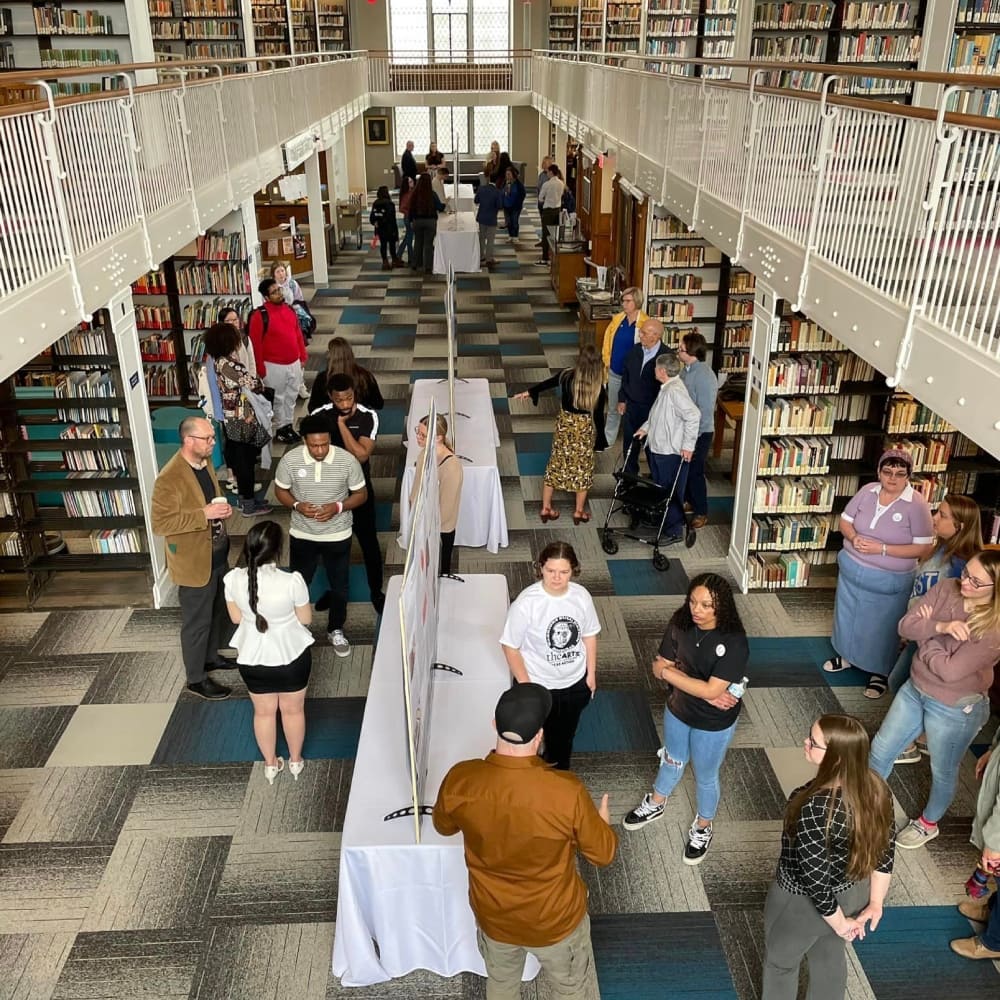
Since 2013, they have been accepting men, too, but why would anyone want to study there when the 20-year average return on investment is -$86,700? A four-year education sets you back $156,000 from this school, but only 39% graduate in that time.
St. Andrews University – Laurinburg, North Carolina
St. Andrews University costs $167,000 for four years. That’s a lot of money, but at least the student-faculty ratio is 12 to one. The town of Laurinburg, North Carolina, is quaint and seems to be very conducive to higher learning.

Despite this, don’t expect to come out of this school making millions of dollars with your diploma. After 20 years, the return on investment is -$98,800. On the plus side, they’ve been offering Master’s degrees in business administration since 2013, so hopefully some of these graduates will redeem the school slightly.
Stillman College – Tuscaloosa, Alabama
Stillman College in Tuscaloosa, Alabama, is a small school of only some 615 students who are drawn to an intimate setting in a town dominated by the University of Alabama. Students get the best of both worlds as they can go to UA parties for a big-school feel.

With a tuition of $98,700 over four years and a graduation rate of just 23%, you’re likely to spend well over six figures, all the while the 20-year return on investment is -$80,400.
Unity College – Unity, Maine
Many people want to make sure the years they spend at college are spent making a positive impact on the planet, and Unity College in Unity, Maine, offers that to many students. Students get an education emphasizing sustainability when they study environmental studies.

What the school doesn’t offer, however, is an education that translates into high-paying jobs in the workforce. A 20-year return on investment, according to PayScale, is $-82,100. The 54% graduation rate is better than half, but a four-year degree costs $151,000.
Rust College – Holly Springs, Mississippi
Rust College only accepts 43% of applicants, as there are many more applicants than can be admitted in the small, 800-student school. It’s a historically black college in Holly Springs, Mississippi, that’s still in operation and the second-oldest private college in the state.

It’s also extremely cheap, with tuition and fees amounting to less than $10,000 a year (a bargain in the U.S.) However low the tuition is, with a four-year degree costing $63,400 including room and board, the return on investment after 20 years is -$97,100. That’s terrible.
Shaw University – Raleigh, North Carolina
Shaw University opened in 1865, and is so prominent a historically black school that it’s been named the “mother of African-American colleges.” It started off training freedmen and grew into the private arts university that we know today.

That’s a really nice name that unfortunately does nothing to mitigate the horrific -$93,600 20-year return on investment. For a college that costs $118,000 for a four-year degree, however nice Raleigh is does nothing to justify that terrible return on investment.
Emory & Henry College – Emory, Virginia
Although its alumni include its share of successful people, Emory & Henry College shouldn’t be mistaken for Emory University, which is in Georgia. Most people simply do not break even after graduating from Emory & Henry.

Emory & Henry graduates pay $179,000 for a four-year degree and have a 54% graduation rate, which compares terribly with the 91% the more famous Emory boasts. The latter institution also has a $452,000 return on investment, and Emory & Henry in Emory, Virginia, has a shameful -$91,300 return after 20 years.
Saint Augustine’s University – Raleigh, North Carolina
Saint Augustine’s motto is “the truth will set you free.” The truth about this Raleigh university, however, is that only 24% of students graduate in four years. Considering that a four-year degree costs $129,000, which is not how long it takes for most people to graduate, the -$77,700 return on investment doesn’t seem justified.

That’s enough to buy a house in a lot of neighborhoods. Less than a thousand students study there, and we hope they got something out of school that makes them feel it was worth the money.
Cazenovia College – Cazenovia, New York
Cazenovia College is close to Syracuse, New York, in a town called Cazenovia. There’s an academic staff of 154, a lot compared to the 915 undergraduates there. That could be the reason why people pay $184,000 for a four-year degree.

It’s a liberal arts school with a great teacher-to-student ratio, but the return on investment is -$98,600. One of its most notable alumni is Leland Stanford, who might have founded Stanford University because he thought he could give students a better return on their investment than his alma mater.
Voorhees College – Denmark, South Carolina
Voorhees College in Denmark, South Carolina, is located in the central part of the state. There are just over 3,000 people in the town, and 600 of them are students. It’s another historically black school whose education gets great reviews, but warm feelings don’t always translate to full bank accounts.

Only 26% of students graduate within four years, and a four-year degree costs $97,000. The return on investment after 20 years is -$153,400 on average, which makes you wonder what they have going on there that makes people love them so much.
Paine College – Augusta, Georgia
Although it’s got the distinction of training John Wesley Gilbert, the first African-American archaeologist, that was back in 1886. Paine College was de-credited by the Southern Association of Colleges and Schools in 2016 and, even though they found another accreditor, it stands to follow that their graduation rate would be as low as 20%.

Living up to the name, students have to pay a painful $97,500 for four years of school. After 20 years, they have a return on investment of -$94,700.
Wheelock College – Boston, Massachusetts
Wheelock College in Boston, Massachusetts, is one of the many colleges that make Boston such a fun town. It was once known as Miss Wheelock’s Kindergarten Training School, as it was founded by Lucy Wheelock, a descendant of John Adams who became a famous educator.

After merging with Boston University’s School of Education, it was renamed Wheelock College. Teachers really don’t make enough money, though, and they need to spend $201,000 for a four-year degree from Wheelock. After 20 years, there is a -$140,700 return on investment.
Lindsey Wilson College – Columbia, Kentucky
Lindsey Wilson College is another school that simply doesn’t return on its investment. There are a lot of serious athletics going on in the school, at least, and there are several alumni playing professional sports. Their soccer team is one of the most dominant forces in the NAIA, the sports league for smaller schools.

It costs $152,000 to get a degree in four years, something only 34% of students manage to do. The return on investment after spending so much for school is -$160,800, which is really depressing.
Martin Luther College – New Ulm, Minnesota
Martin Luther in Minnesota is the home of one of the most peculiarly active campuses in the U.S. A third of the under 900 students play varsity sports, while two-thirds play intramural sports. That definitely has a lot to do with how happy the students look all the time.

As in shape as the students are while they are in school, they are apparently not that equipped for the real world. Tuition costs $93,300 for four years, but after 20 years there’s -$123,200 return on investment on average.
Johnson University – Kimberlin Heights, Tennessee
Johnson University in Tennessee is a Christian school just 12 miles away from Knoxville in a town called Kimberlin Heights. It’s a charming place to put a private school, and the whole town appears filled with team spirit supporting the Johnson University Royals.

Chances are only slightly more likely you’ll graduate on time, but the return on investment for the $89,800 that it costs you to study there for four years doesn’t add up according to PayScale. After 20 years, the return on investment is -$97,900.
Claflin University – Orangeburg, South Carolina
Under 2,000 undergraduates study at Claflin University, which makes it a relatively small educational setting. It’s a historically black college that is in the history books for awarding the first diplomas in the U.S. to a black woman when Alice Moorer and Annie Thortne graduated in 1884.

The college’s contributions to humanity have been far less impressive lately, even though over half of the students graduate after four years. Tuition is $128,000, but expect to see a return on investment of -$133,900 20 years after you receive your diploma.
Benedict College – Columbia, South Carolina
Benedict College is a liberal arts school that was founded in 1870 as a teacher’s school in Columbia, South Carolina. Over 2,000 undergraduate students go to school there, paying $124,000 for a four-year degree. That being said, only 22% can expect to graduate in that amount of time.

You’d think that they’d be able to teach their students useful skills for the outside world considering their long history in education. Unfortunately, the 20-year return on investment stands at -$76,800.
Campbellsville University – Campbellsville, Kentucky
Campbellsville University is next to Green Lake, a manmade reservoir in Kentucky that allows students to study in the middle of nature. It has a satellite campus in Hodgenville, a town in the same state that has the distinction of housing the cabin where Abraham Lincoln was born.

As for the university, it includes colleges of music, education, and art, but sadly none of those professions really offer that much money. The tuition is $143,000 for four years, and the return on investment after 20 years is -$76,800.
Talladega College – Talladega, Alabama
Talladega College costs $88,200 for a four-year degree, and some 43% can expect to graduate in that time. It’s a historically black college established on a building meant to be a Baptist academy. Postbellum, it was purchased and charted by the governor.

It’s famous for its marching band, the Talladega College Tornado Marching Band, which competes nationally. Despite this distinction, the return on investment 20 years after graduating is -$156,900.
Miles College – Fairfield, Alabama
Despite Charles Barkley having donated $1 million to the school in January 2020, which was the most ever given to the school, the 1,500 students studying there shouldn’t expect the most lucrative futures. One of the worst returns on investment can be expected after going to Miles College in Fairfield, Alabama, according to PayScale.

It costs $90,200 for a four-year degree, but only 17% end up finishing in four years. A full 20 years after graduating, you can expect a return on investment of -$164,600.
University of Montevallo – Montevallo, Alabama
Montevallo, Alabama, is home to a university that takes its name from the town. It’s a public liberal arts school that is ranked high on the U.S. News & World Report’s list of public schools in the state. The campus is beautiful and is characterized by antebellum architecture.

There’s even a yearly Life Raft Debate, which is where every professor must argue why their skill set is more valuable than that of their peers. While tuition for in-state students is $48,360, out-of-state students are required to shell out $100,440!
University of Science and Arts of Oklahoma – Chickasha, Oklahoma
The University of Science and Arts of Oklahoma is a public school in Oklahoma that costs just over $6,000 a year. It’s considered one of the best in-state deals as the education isn’t bad at all. Even though that’s still no small amount, it’s nothing compared to the whopping $99,700 out-of-state students pay to go there.
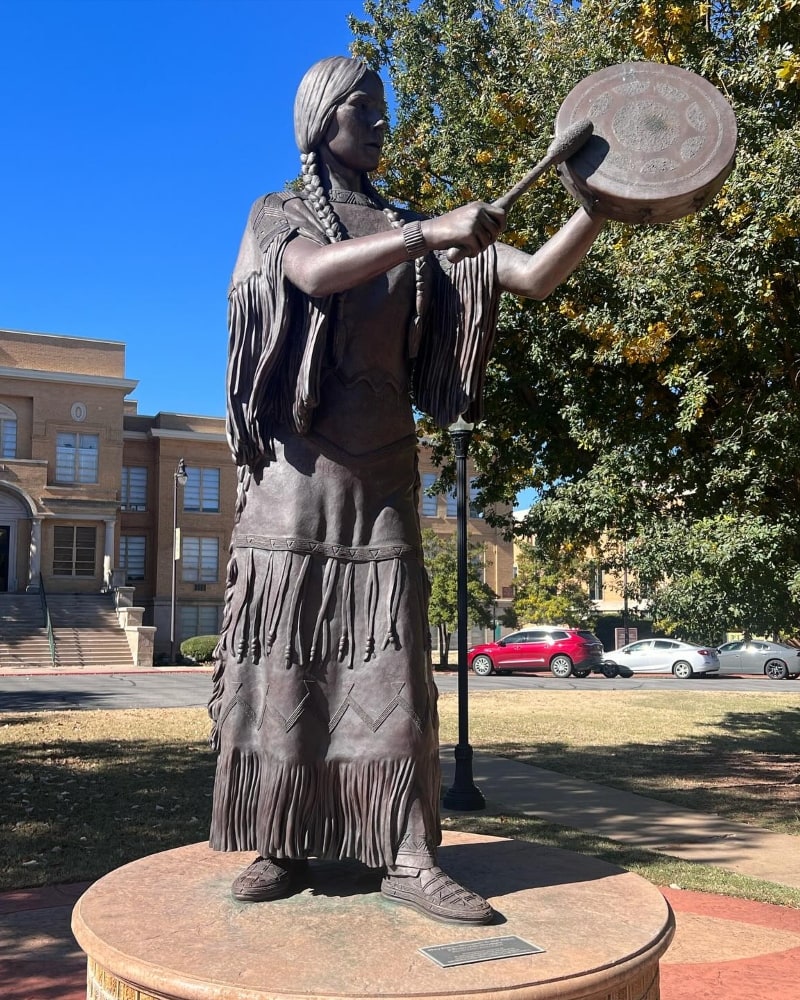
After 20 years, that makes the return on investment -$65,500, so it might be best to look for your own state for good deals on public schools.
Morris College – Sumter, South Carolina
Morris College is in Sumter, South Carolina, which shouldn’t be confused with Fort Sumter, located in the same state. It’s another historically black college, many of which appear on this list, unfortunately. For a town of only some 40,000 people, many of them are students.

Joining the 551 students at Morris are students from several other institutions that have campuses in Sumter. Four years at the college costs $92,200. The 20-year return on investment from Morris is -$106,800.
The University of Montana Western – Dillon, Montana
The University of Montana Western, as it’s currently called, is located in Dillon, Montana. It used to be called the Montana State Normal school and was formed to train teachers. Later, its name changed to Western Montana College of the University of Montana, and then again to its current name in 2000 on becoming part of the Montana University system.

Some 1,500 students study here, 46% of which can expect to graduate within four years after paying $109,000. The 20-year return on investment is -$71,400, which doesn’t justify the price tag.
Maine College of Art – Portland, Maine
Maine College of Art is also shortened to MECA, and for many New England students this is a Mecca of art expression and learning. That comes at a steep cost, though, with a four-year degree costing $184,000.
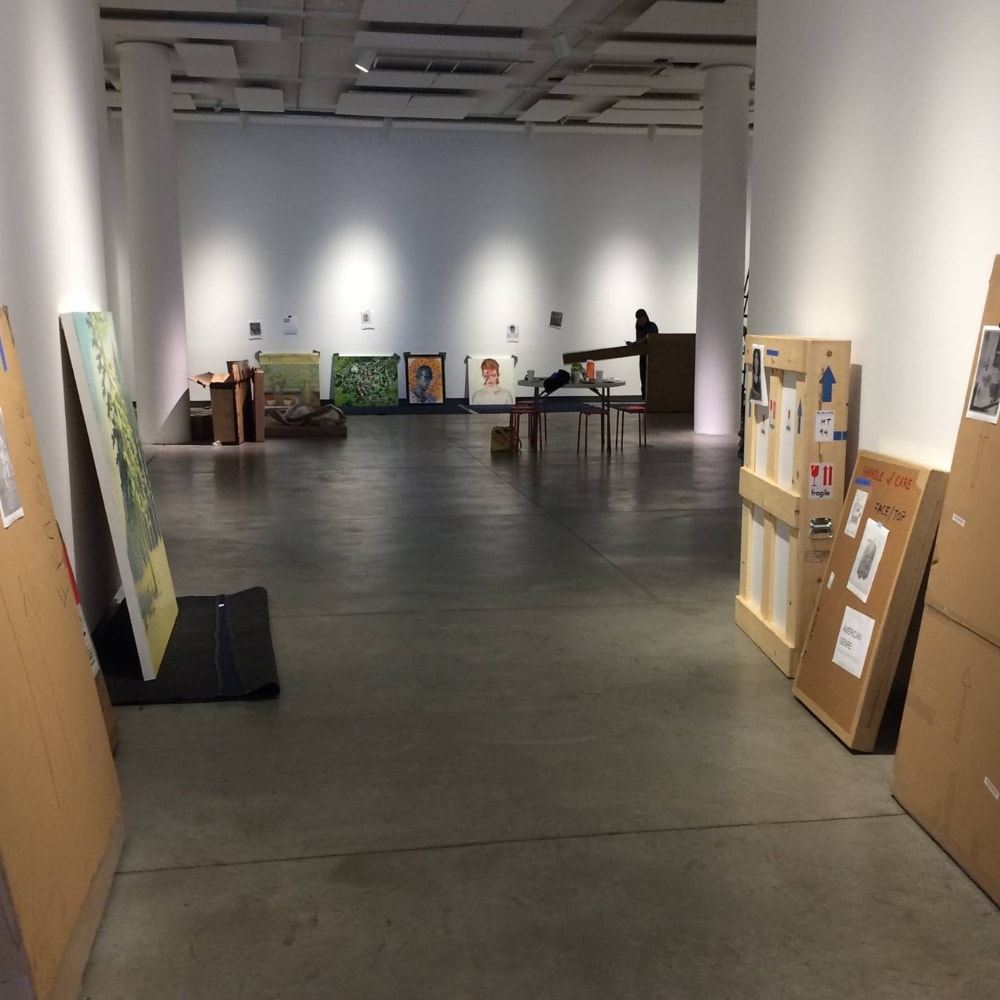
That’s astronomical! If you go to school here, don’t expect to use your art degree to make a lot of money, as the return on investment is -$163,600. They claim their “educate artists for life,” but evidently that doesn’t include how to integrate into the workforce.
Brewton-Parker College – Mount Vernon, Georgia
Brewton-Parker offers students a small, intimate education experience in the quiet town of Mount Vernon, Georgia. Out of 2,451 people who live in the town, some 1,119 of them are students at the college. Although many students will be attracted to being so connected with the townies, this comes at a serious sacrifice.

A four-year education costs $113,000, but only 17% actually graduate in time. The 20-year net return on investment is -$92,200 all in all, which is abysmal.
University of South Carolina Aiken – Aiken, South Carolina
The University of South Carolina Aiken, located in Aiken, South Carolina, is part of the University of South Carolina system. Over the past few years, it’s made a name for itself as the fastest-growing of these schools, which are by nature cheaper for students studying in-state.

For out-of-state students, though, the four-year tuition is a whopping $130,000. After 20 years, the return on investment for these students is only -$66,000, which is hardly enough to justify going to school far away from your parents.
30+ Archaeological Finds That Made Us Say ‘Whoa’
Collapsible Rings
In the 16th and 17th centuries, explorers carried more than just maps – they wore the world on their fingers. The explorers wore collapsible rings that unfolded into a tiny universe. Resembling complex navigational tools, they were symbols of wisdom and adventure.

This particular ring, believed to have roots in Germany, connects to the 15th-century physician Bonetus de Latis. Crafted with two to eight bands adorned with celestial patterns or exquisite gems, these rings were knowledge condensed into wearable art.
The Galgano Sword
There are many swords in myths around the world that are said to be all-powerful, and one such is The Galgano Sword. The sword once belonged to a knight, Galgano Guidotti, who renounced all his possessions following some visions.

Allegedly, the knight also thrust his sword into a stone, and the site is said to be home to almost 19 inexplicable occurrences. It also led to the sword getting intertwined with Arthurian lore.
Ancient Roman Floors
Archaeologists from Verona’s Superintendent of Archaeology, Fine Arts, and Landscape have recently uncovered a stunning ancient Roman mosaic floor nestled close to the remnants of an ancient Roman villa.

Discovered in May 2020, this intricate floor is a relic from the third century AD. As they delicately work through layers of history, the Municipality of Negrar di Valpolicella’s Facebook page continues to share their journey.
Stacks of Gold Coins
This archaeological find probably sent all the locals digging around the neighborhood. In 2018, beneath the Cressoni Theater in Como, Italy, a group of archaeologists struck gold—literally. Their discovery? Hundreds of ancient gold coins!

Numismatist Maria Grazia Facchinetti speculated that these coins, ranging from the late 4th century to around 474 CE, might have belonged to a public bank or deposit. Initially slated for demolition, the Cressoni Theater gained a reprieve thanks to this astonishing find.
A Disappearing Village
Imagine a game of hide-and-seek with an entire village! Back in 1270, a village named Fabbriche di Careggine was established in Tuscany, Italy. But the village vanished underwater when they finished the Enel Dam in 1946.

Now, here’s where it gets wild! Sometimes, when the lake needs a check-up, they drain it. When that happens, you can catch a sneak peek of the ancient ruins. It’s like the village saying, “Hey, we’re still here!” The village is next set to appear in 2024, so hold onto your horses to catch the sight of this mysterious place!
A Manual on Mummification
In February 2021, an Egyptologist named Sofie Schiødt found a 3,500-year-old manual on mummification. This discovery was all the more rare as people mostly shared the info orally. Schiødt called it “super detailed,” which means it tells us a lot of stuff.

According to the manual, to keep everything safe and smelling good, the Egyptians used special plant stuff made into a liquid, then put it on a red cloth which they wrapped. They did this every four days for about 70 days. That’s quite a process, right?
A 2,000-Year-Old 20-Sided Dice
Guess what, gamers? The Metropolitan Museum of Art in New York has a treasure that’ll make hardcore gamers drool—an ancient 20-sided dice! Yeah, that’s right, a dice with not 6, not 10, but 20 sides!

This special dice, an icosahedron, was a magical tool for ancient Greek and Roman fortune-tellers. It’s this cool artifact found in Egypt, and it’s super old, from between the 2nd century BCE to the 4th century CE. It’s made from a rock called serpentinite, with Greek letters carved on it.
Golden Sandals and Toe Coverings
Imagine stumbling upon ancient fashion finds fit for royalty! Among the treasures tucked away in the belongings of Thutmose III’s three wives—Menhet, Menwi, and Merti—were these delicate, stunning sandals and toe coverings made of thin gold.

Thutmose III, an influential pharaoh, sure had an eye for the finer things in life. These exquisite accessories were discovered in 1916. Local residents stumbled upon this royal resting place, and after a looter scare, officials got to work excavating the site.
Horns of Aurochs
Back in the 1600s, Asia, Europe, and North Africa were populated by these massive cattle called Aurochs. Recently, scientists discovered some things that are giving them some insights into these creatures.

They found three drinking horns from aurochs. When scientists checked out the DNA in these horns, they discovered something pretty surprising—they’re kind of related to the cows we have today!
Varna Gold
Back in 1972, workers in Bulgaria were gearing up to build a factory near the Black Sea when they stumbled upon what’s now called the Varna gold.

This sparkling treasure is seriously ancient, dating back to a mind-boggling 4,600 BCE. Over almost two decades, from 1972 to 1991, archaeologists found around 13 pounds of pure gold— jewelry, beads, decorative bulls, and rings. The team continued digging, eventually uncovering over 312 graves, most of which contained gold.
A 2,000-Year-Old Cat Etching
This is not ordinary graffiti like you might find on the streets, but a 2,000-year-old sand doodle in Peru in the shape of a cat! It was discovered in 2020 on a hillside in southern Peru.

This 121-foot-long cat is actually part of a bigger gang—the Nazca Lines. These are giant drawings in the dirt showing animals, plants, and all sorts of cool shapes. They’re now a UNESCO World Heritage site.
A 14th Century Drawing by a 7-Year-Old
In Novgorod, Russia, there’s a super old drawing from between the 11th and 14th centuries CE. It’s believed to be the work of a seven-year-old kid named Onfim.

This drawing is part of a bunch of pictures found scribbled on birch bark. From Onfim’s work, we can infer that he was learning a language called Old Slavic. His doodles were all about warriors, horses, and people.
A Viking Snowshoe
In Norway, something incredible happened in 2006 when the ice thawed away from the mountain pass at Lendbreen. As the ice kept melting, treasures dating back to the 3rd and 4th centuries CE started popping up.

The path’s treasure included stuff like horse nails, sleds, and walking sticks. Among the finds was a Viking snowshoe made for a horse. This find gives a peek into the daily lives of these ancient travelers.
A 13th Century Wallet
Talk about a wallet worth more than its weight in gold! This isn’t just any old wallet—it’s a treasure from the medieval world dating back to the 13th century. What makes it so special? Well, it’s not about the money inside; it’s the wallet itself that’s the real gem.

This wallet is like a piece of art, showcasing the incredible craftsmanship of that time. Made from dyed leather with stamped patterns, it’s decorated with animals and beautiful, intertwined lines.
The Gilgamesh Dream Tablet
Discovered in Iraq and dating back 3,600 years, this tablet became famously known as the Gilgamesh Dream Tablet. Why? Because it contains a part where Gilgamesh spills his dreams to his mother.

Sold with a phony backstory in 2007—claiming it was part of a box of old bronze bits from 1981—it traveled across different owners worldwide, finally landing in the hands of Hobby Lobby in 2014 for display in their Museum of the Bible. It was finally seized by the authorities in 2021.
Keys From the Middle Ages
During the Middle Ages, keys were crucial for safeguarding not just personal stuff, but also cattle. What’s cool is that these keys came in all sorts of shapes and sizes, made mostly from a mix of copper alloy.

Some keys were crafted from silver, lead, animal bones, or even iron, showing off the creativity and variety of materials used back then.
The Oldest Ball of Yarn
Talk about yarn that’s older than old! This ball of yarn, dating back to the Middle Neolithic period, is a real ancient treasure found in Switzerland.

This ball of carbonized thread, made from linen or nettle, dates back to around 3,900 BCE. The region where they found this yarn is linked to the La Tène Iron Age culture, which was around 400 BCE. But the yarn itself has been hanging around since way before then.
An Artistic Tablet
This particular tablet is part of a group of 10 plaquettes found in Les Varines, Jersey, which are believed to be the oldest known art in the British Isles. Discovered over a few years, from 2014 to 2018, these plaquettes date back to around 23,000 to 14,000 years ago.

These rocks are etched with abstract designs that look like animals and even human faces. The intricate lines and curves seem to have been deliberately carved, hinting at artistic expression.
An 800-Year-Old Imperial Palace
Chinese archaeologists thought they were just checking out old buildings before building an Olympic village near Beijing for the 2022 Winter Olympics. But guess what? They discovered something epic—ancient ruins of an imperial summer palace from the Jin Dynasty, ruled by Emperor Wanyan Jing from 1189 to 1208.

They uncovered more than 60 building foundations, walls, moats, and roads, making up the grandeur of an ancient palace. This finding was so significant that they had to relocate the Winter Olympics Village to across the road.
Harriet Tubman’s Father’s Home
In April 2021, archaeologists made an incredible find, locating the former home of Ben Ross, the father of the legendary Harriet Tubman. Situated in Maryland’s Blackwater National Wildlife Refuge, this property in Dorchester County might have been where Tubman lived during her younger years.

Led by Julie Schablitsky, a team of archaeologists unearthed fascinating artifacts dating back to the early 1800s. Among the discoveries were a 1808 Liberty coin, a button, bricks, pottery, and a drawer pull.
A 300-Year-Old Anchor From a Mystery Ship
A shipwreck anchor found in the North Sea in 2019 seemed to shed light on a longstanding Norwegian mystery. This sunken vessel, the Juffrau Elisabeth, held secrets that had puzzled locals for centuries.

The wreckage had been a mystery that stumped many, and it was the Sogne Diving Club, a dedicated group on a quest for decades, that finally unearthed the ship’s remains.
78,000 Years Old Human Caves
The caves of Panga ya Saidi in Kenya are like a treasure trove of human history, spanning an incredible 78,000 years! These caves hold a rich collection of human artifacts, starting from the Middle Stone Age and continuing all the way to the present day.

The main chamber alone spans over 1,000 square feet, suggesting that it could have accommodated hundreds of people. The earliest inhabitants left behind large stone tools, hinting at their way of life. But somewhere around 67,000 years ago, more specialized tools like arrowheads and blades started appearing.
Advanced Tools From 200,000 Years Ago
The story of human migration and technological advancements is like a puzzle with pieces scattered across time. Genetic evidence suggests that a small group of Homo sapiens left Africa around 60,000 years ago, and their success might have been linked to advanced stone tools—fine blades that could be attached to spears, unlike bulkier hand axes.

In southern India, a site holding ancient human settlements – which was less explored, until recently – revealed advanced tools dating back more than 200,000 years. This discovery challenges what we thought we knew about early human innovation.
A Sunken Ship
The Greek ship Antikythera sank off the coast of Antikythera about 2,000 years ago and was discovered in 1900. Among the recovered artifacts was a puzzling object—layers of intricately fitted brass gears encased within a wooden box. This object left archaeologists scratching their heads.

Turns out, the device was actually a mechanism capable of predicting the positions of planets and stars based on dates. Further examination uncovered its ability to predict eclipses and moon phases.
Pompeii
Despite over two centuries of excavations since 1748, Pompeii remains a site brimming with hidden stories, with approximately 170 acres yet to be explored. Each new dig unveils fresh insights into the lives of its former inhabitants.

The ongoing excavations continue to unravel Pompeii’s mysteries, offering surprises and shedding light on various aspects of ancient life with each excavation.
A Holey Jar
The discovery of a holey jar—filled with actual holes—has certainly piqued the interest of archaeologists! Unearthed from outside London and dating back to Roman Britain, this peculiar jar has left researchers puzzled about its original purpose.

Currently housed at the Museum of Ontario Archaeology in Canada, its exact function remains a mystery. Archaeologists speculate that it might have served as a lamp or perhaps even as a kind of cage for creatures like mice. However, these are educated guesses, and the true purpose of this curious vessel remains elusive.
Remnants of the Sanxingdui Civilization
It all began in 1929 when a regular man stumbled upon a cache of jade and stone artifacts while repairing a sewage ditch. Decades later, in 1986, archaeologists excavating the area unearthed two more pits teeming with treasures from the Bronze Age, including jade and bronze sculptures.

These discoveries raise questions about the Sanxingdui civilization—a culture that thrived and eventually vanished between 2,800 and 3,000 years ago. Evidence suggests they inhabited a walled city along the Minjiang River. However, the reasons behind their departure from this city remain a mystery.
The Voynich Manuscript
The Voynich manuscript is a book that historians itch to dive into. Discovered in 1912 by an antique bookseller, this 250-page enigma boasts an unknown script and intricate illustrations, ranging from botanical sketches to Zodiac signs.

Currently housed at Yale University’s Beinecke Rare Book & Manuscript Library, this ancient text likely originates from Central Europe from around 600 years ago. Yet, its contents remain a riddle that scholars strive to solve. A linguistic professor, Stephen Bax, claimed progress in deciphering 14 characters from the manuscript in February 2014.
Baghdad Batteries
The Parthian batteries, crafted during the ancient Parthian and Sassanid periods (1st to 3rd century AD), stand as a remarkable find shedding light on Mesopotamian civilization. These jars, known as the Baghdad Batteries, were found in Iraq in 1936 and feature cylindrical iron casings housing a copper spike.

While the evidence isn’t definitive, intriguing theories suggest these containers might have been filled with grape juice, creating an electrochemical reaction that generated a voltage potential. Modern reconstructions have demonstrated that these setups could indeed generate voltages sufficient for such a purpose.
Roman Dodecahedron
The Roman dodecahedron is a tiny hollow object sporting 12 flat pentagonal faces, each with a perfectly centered circular hole of different sizes. This enigmatic artifact, tentatively dated back to the 2nd and 3rd centuries CE, has puzzled historians, archaeologists, and anthropologists.

These mysterious objects have popped up all across Europe, from Wales to Hungary and France to Germany. The precision of their geometry has sparked theories that they might have been used for astronomy, but the real reason remains a mystery.
Wall Paintings in Colombian Amazon
Imagine stumbling upon breathtaking Ice Age rock paintings nestled in the Columbian Amazon. These awe-inspiring artworks, dating back an astounding 12,500 years, are a captivating glimpse into ancient creativity.
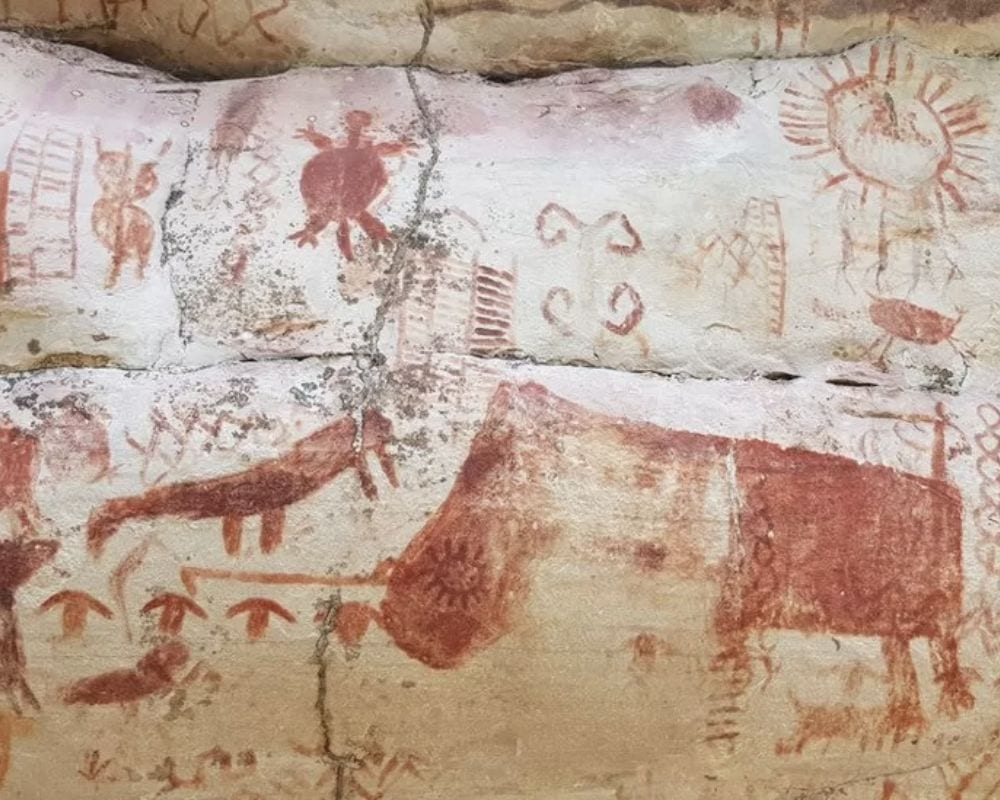
Archaeologists first unearthed this treasure trove of ancient art, with tens of thousands of paintings, using high-tech satellite imagery. What they found was a truly fascinating piece of history.
The Oldest Chinese Art
This unassuming little figurine may seem tiny, but it holds a colossal title—it’s now the oldest-known example of Chinese art! Discovered at Lingjing in Henan Province in China, this Paleolithic treasure carved from blackened bone dates back 13,500 years.

What’s remarkable is the intricate detailing on its surfaces, showing evidence of diverse tool usage, suggesting the artist wielded a range of carving techniques.
Forrest Fenn’s Treasure
An ornate, Romanesque chest, reportedly filled with gold nuggets, precious coins, and sparkling gems, is said to be hidden in the rugged terrain of the Rocky Mountains. The person behind this mysterious treasure is Forrest Fenn, an enigmatic art dealer from New Mexico. This was the dream of approximately 300,000 hopefuls who eagerly joined the quest, chasing the allure of a $2 million fortune.

Just before Fenn’s passing at the age of 90, news finally broke that someone had cracked the code and discovered the treasure trove. However, the finder’s name and final location remain a mystery.
The Staffordshire Hoard
Imagine wielding your metal detector, sweeping the earth in search of hidden treasures, only to stumble upon something straight from the depths of history itself.

In 2009, a metal detectorist experienced this exact thrill in England, discovering what would later be known as the Staffordshire Hoard—an astounding collection of over 3,000 gold and silver artifacts. Dating back to the seventh century, this hoard stands as the largest reservoir of Anglo-Saxon riches ever found.
The Dead Sea Scrolls
The Dead Sea Scrolls, a captivating collection of over 900 ancient manuscripts, surfaced unexpectedly in 1947 within the caves near the Dead Sea. These scrolls date back to the third century BCE.

What’s fascinating is that this groundbreaking discovery unfolded thanks to a shepherd boy, Muhammed ed-Dib. As the story goes, while searching for a lost sheep, ed-Dib stumbled upon the caves housing these priceless scrolls.
A 500-Million-Year-Old Hammer
The story of Max and Emma Hahn’s discovery of a hammer encased in rock is truly an amazing archaeological discovery. Their find – said to be uncovered in the 1930s – sparked immense curiosity when the rock containing the hammer appeared to be dated to the Ordovician period, which was an astonishing 400 million years ago.

The hammer itself, upon initial examination, supposedly predates even the rock it was found in, supposedly clocking in at a staggering 500 million years old. Even more baffling, a portion of the handle had reportedly begun the transformation into coal.
Dropa Stones
The tale of the Dropa Stones has long captivated the imaginations of many. In 1938, an archaeological team exploring caves in China’s Baian-Kara-Ula region stumbled upon a remarkable find – hundreds of stone disks resembling phonograph records nestled within the caves’ confines.

Reports surfaced, suggesting that when placed on a special turntable, the stones emitted peculiar vibrations akin to an electric charge passing through them. However, these intriguing claims were shrouded in secrecy and never fully disclosed or validated. Soon, everything and everyone related to this archaeological find disappeared from the public eye.
Saqqara Bird
The Saqqara bird is quite a puzzling artifact. This wooden birdie, found in Egypt, is super old—like 2,200 years old! But here’s the catch – we don’t know exactly where or how it was found in 1898.

This bird isn’t your typical bird. With its airplane-like tail and mysterious design, some folks think the ancient Egyptians might have known something about flying. Some even say they made the first-ever aircraft! So, whether it was a bird, a plane, or something else, that’s a mystery only ancient Egyptians can solve.
Piri Reis’s Map
Piri Reis, a Turkish cartographer in the 16th century, had a map that was pretty ahead of its time. He drew a map in 1513 that showed places like Europe, Africa, and even Brazil.

Reis’ map details Antarctica’s geography without any ice, and that’s something that hasn’t happened for over 6,000 years! It’s a bit of a mystery how Reis knew about Antarctica’s old look since it’s been icy for a long time.
Painted Seashells
We used to think Neanderthals were primitive, but new discoveries suggest they were creative like us. In Italy, painted shells were found from a time before humans arrived in Europe.

Neanderthals might have made these artsy shells, showing they had artistic skills. This changes what we know about them and shows they might have had a creative side, just like people today.
Neanderthal Tools
The discovery of a tool called a lissoir at a Neanderthal site suggests they were smarter than we thought. Found in France at an Abri Peyrony site, this tool, used for making leather, is still used today.
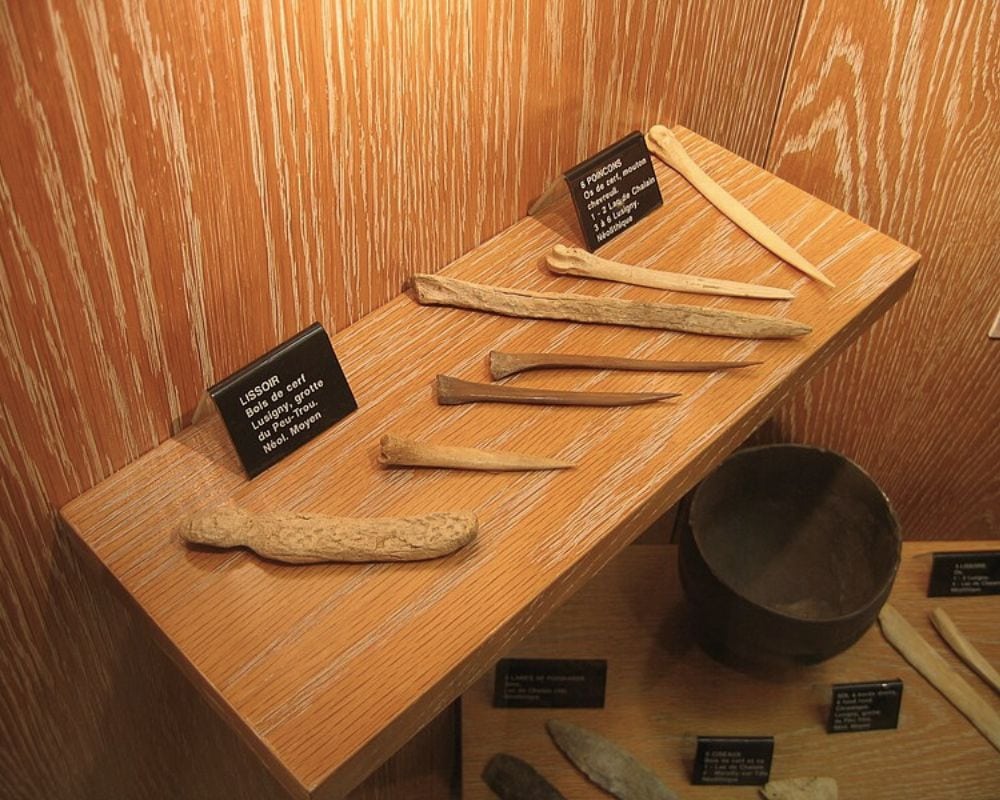
This finding hints that humans might have learned this craft from Neanderthals and that we might have seriously underestimated their thinking power. Maybe it’s time to retire the insults based on them!
Ur Ram Statues
The Ur Ram, known as the Ram in a Thicket, hails from the ancient city of Ur in Sumeria, dating back to 2600-2400 BCE. Discovered in 1928 at the Royal Cemetery in southern Iraq, this statue now resides in the British Museum.

Skilled artisans crafted these pieces using a wooden core adorned with lapis lazuli, gold, copper, and red limestone to create intricate and beautiful figures of a ram or goat.
Ceremonial Drinking Vessels
The Basse Yutz Flagons, crafted around the 5th century BCE in Eastern France, are ceremonial drinking vessels that were unearthed in 1927.

These flagons, intricately crafted by the skilled hands of Celtic artisans during the Iron Age, are fashioned from a single piece of copper alloy with sculptures and semi-precious stones. They were coated with resin to make them watertight—truly blending function with exquisite beauty.
A Record-Keeping Device
The ancient city of Caral, situated in present-day Peru, boasts incredible historical significance as one of the oldest known civilizations in America. Discovered in 1948 within the ruins of this UNESCO World Heritage Site, the quipu is a mesmerizing artifact that sheds light on ancient record-keeping practices.

Dating back to approximately 3,000 BCE, Quipus is essentially a complex arrangement of knotted ropes, serving as an intricate system for recording information—a vital means of communication in ancient societies.
A Leaping Bull Statue
The Minoan Bull Leaper, discovered in 1921 in Crete, is a captivating and, dare we say, adorable bronze statue showcasing an extraordinary and possibly implausible act of bull leaping. Despite the debate on whether it reflects a genuine athletic feat, bull leaping was a significant and revered practice within Minoan culture.

The Minoans held bull leaping in high regard, viewing it as both an art form and a cultural emblem. This charming statue continues to fascinate, sparking discussions about the Minoan civilization.
While the current world is cool, history has got some seriously mind-blowing stuff, too. Think about it—digging up ancient bits and bobs can be way more thrilling than the latest tech. We’re talking about unearthing historical finds that will challenge what you thought you knew. Here are some of those archaeological discoveries!